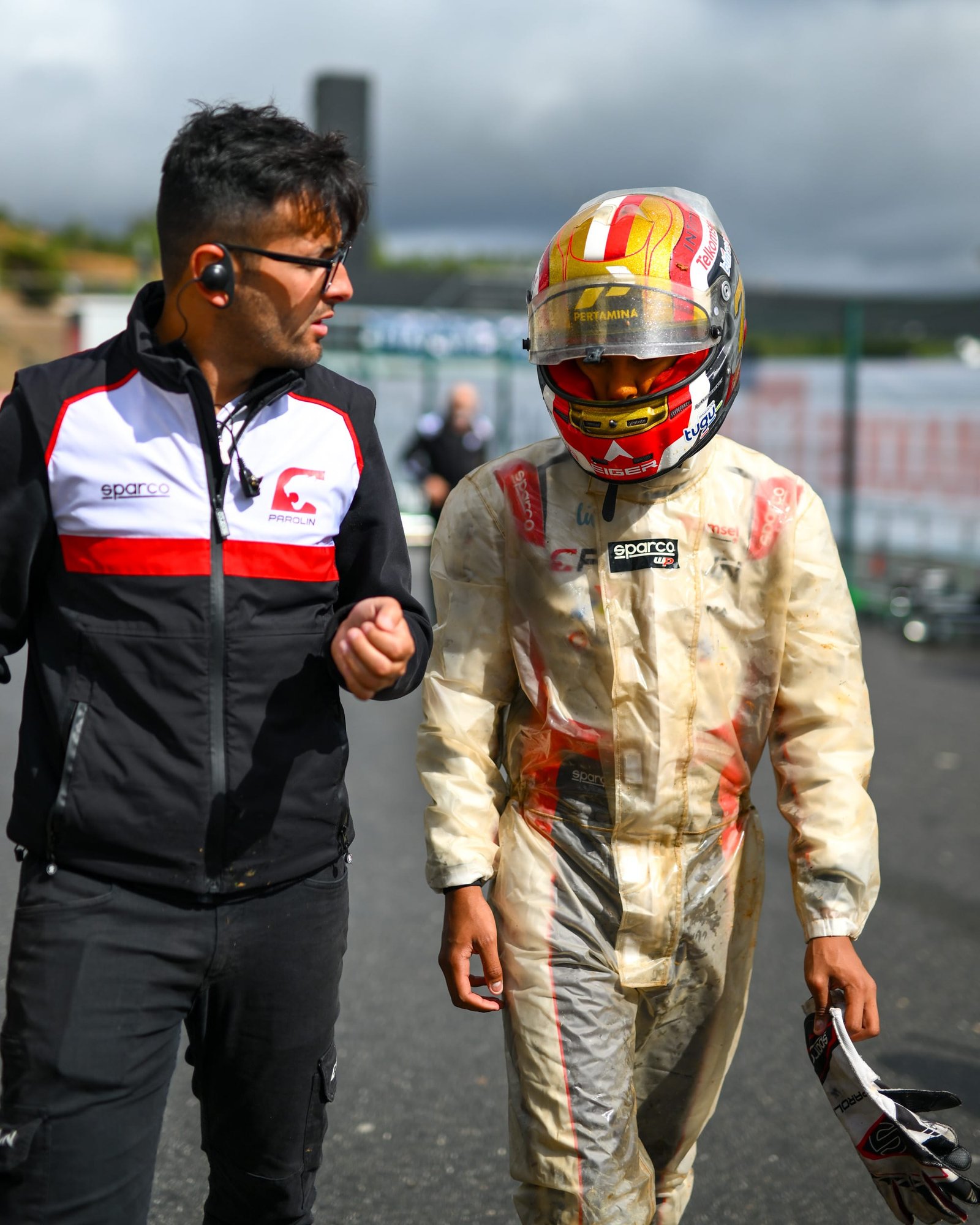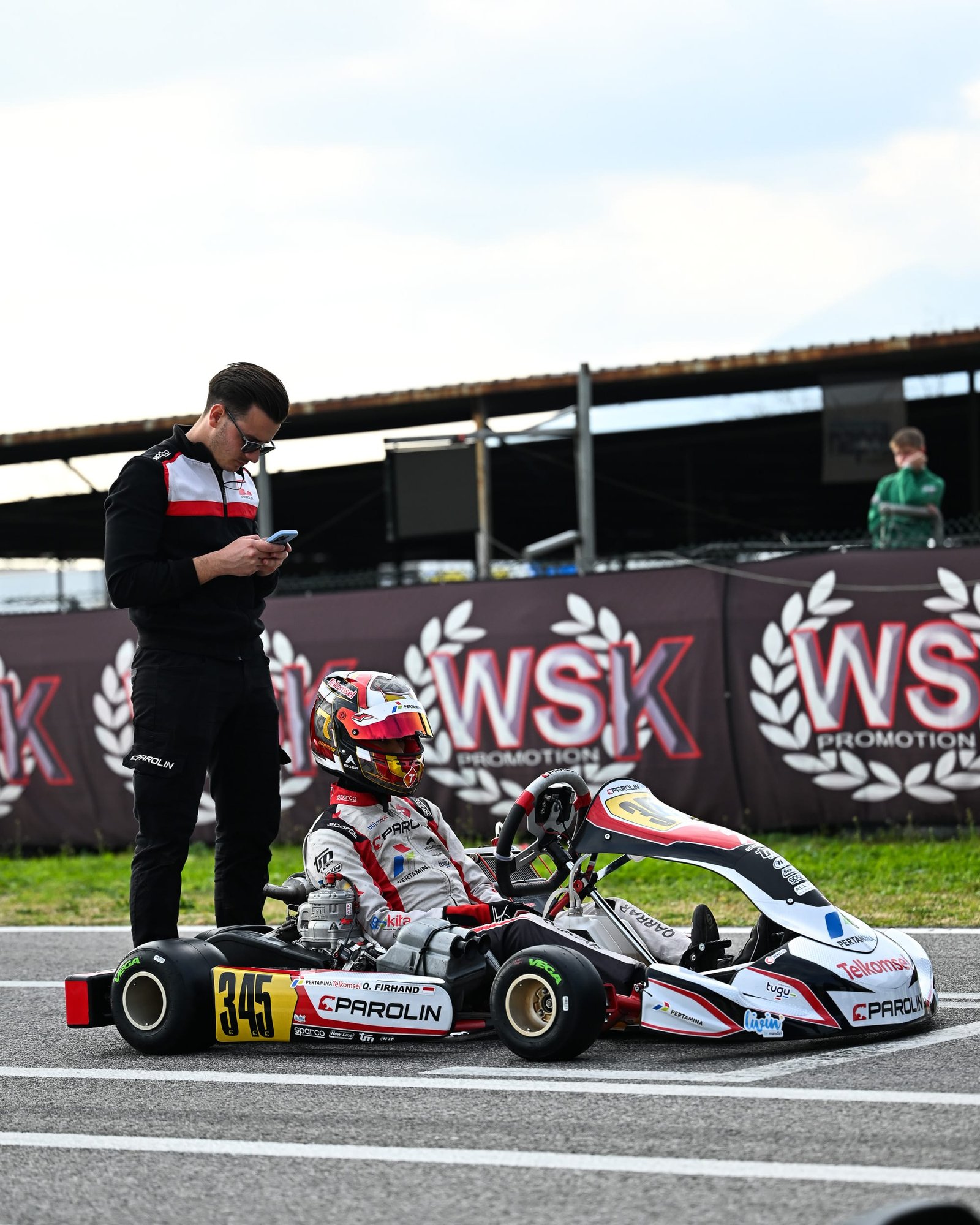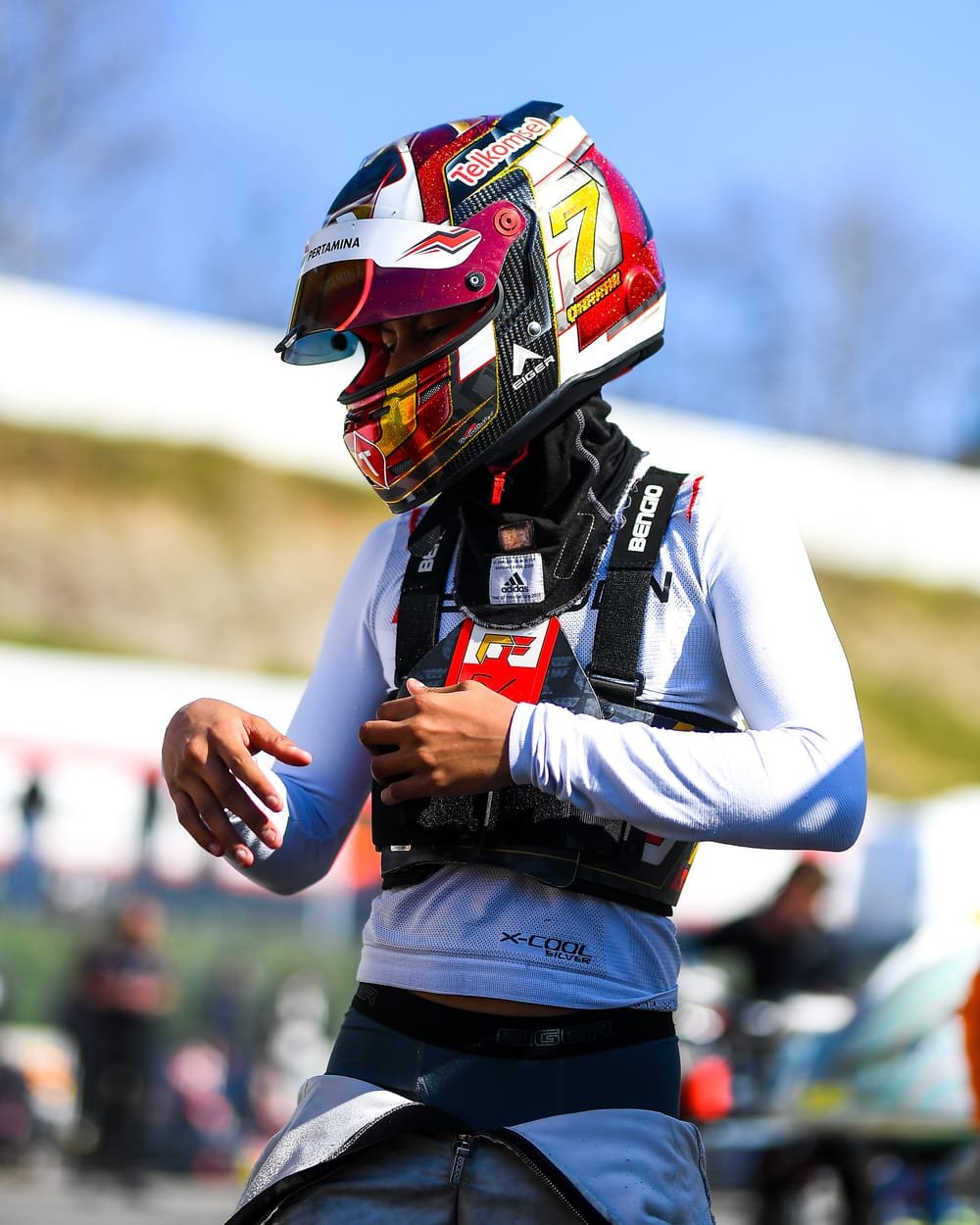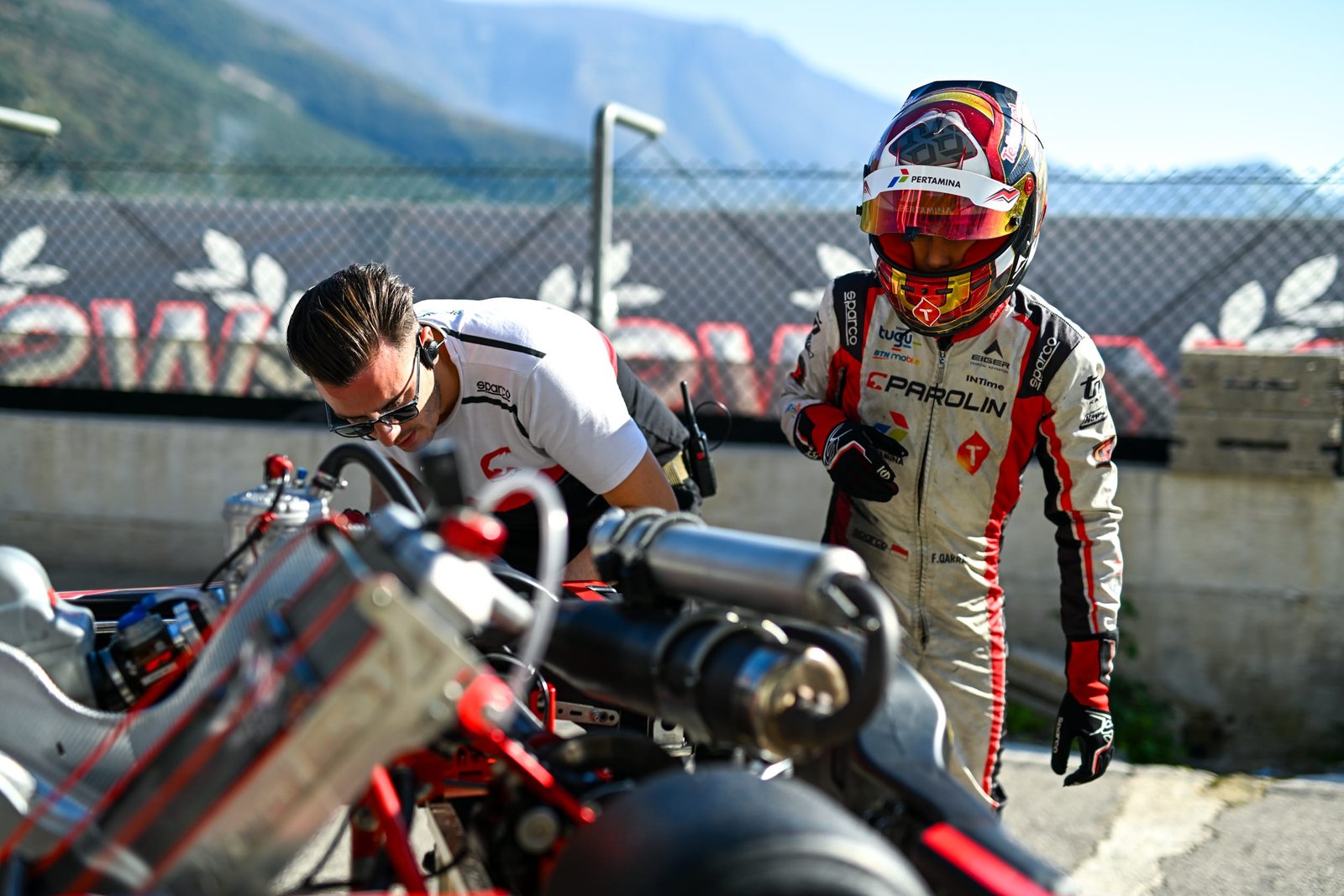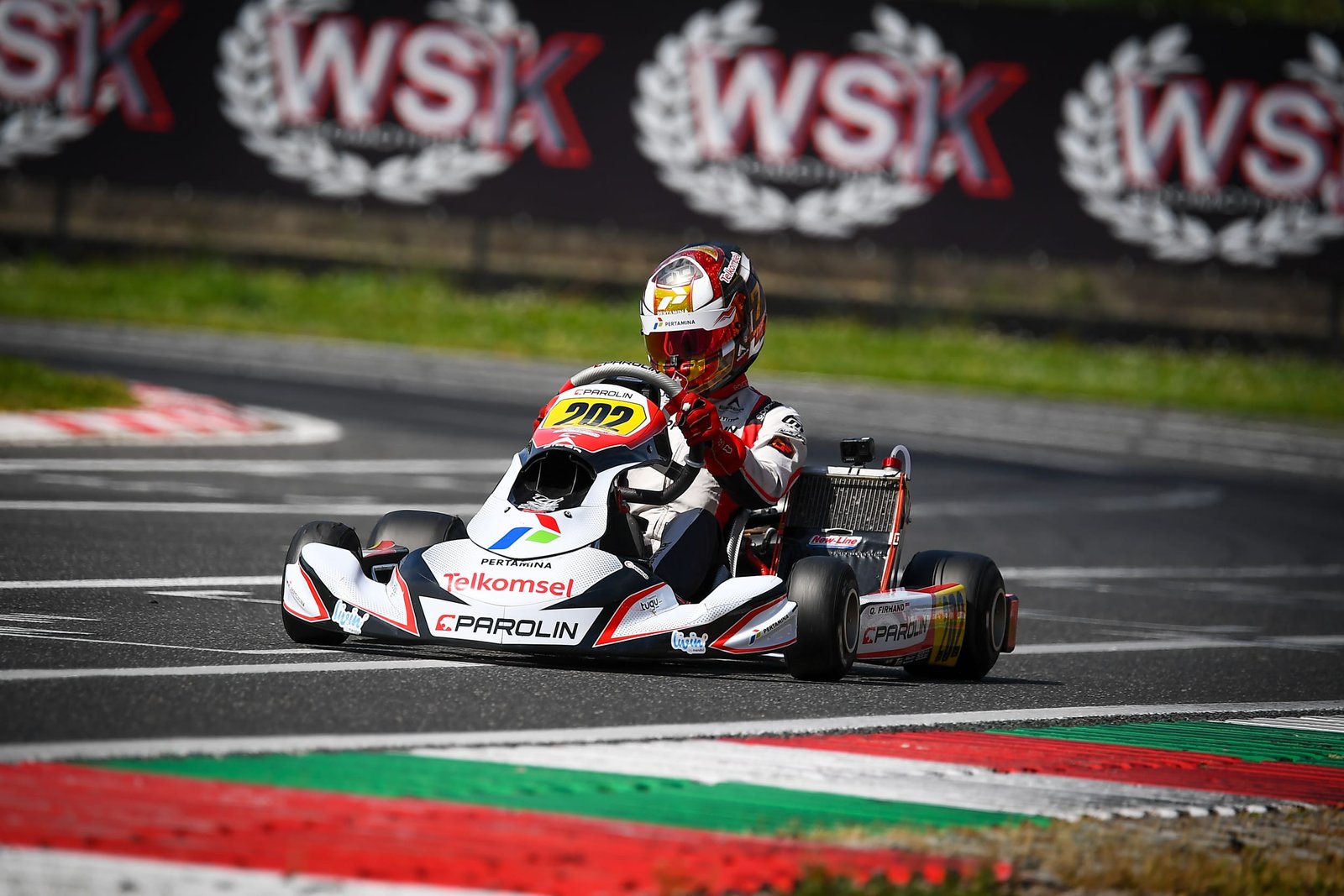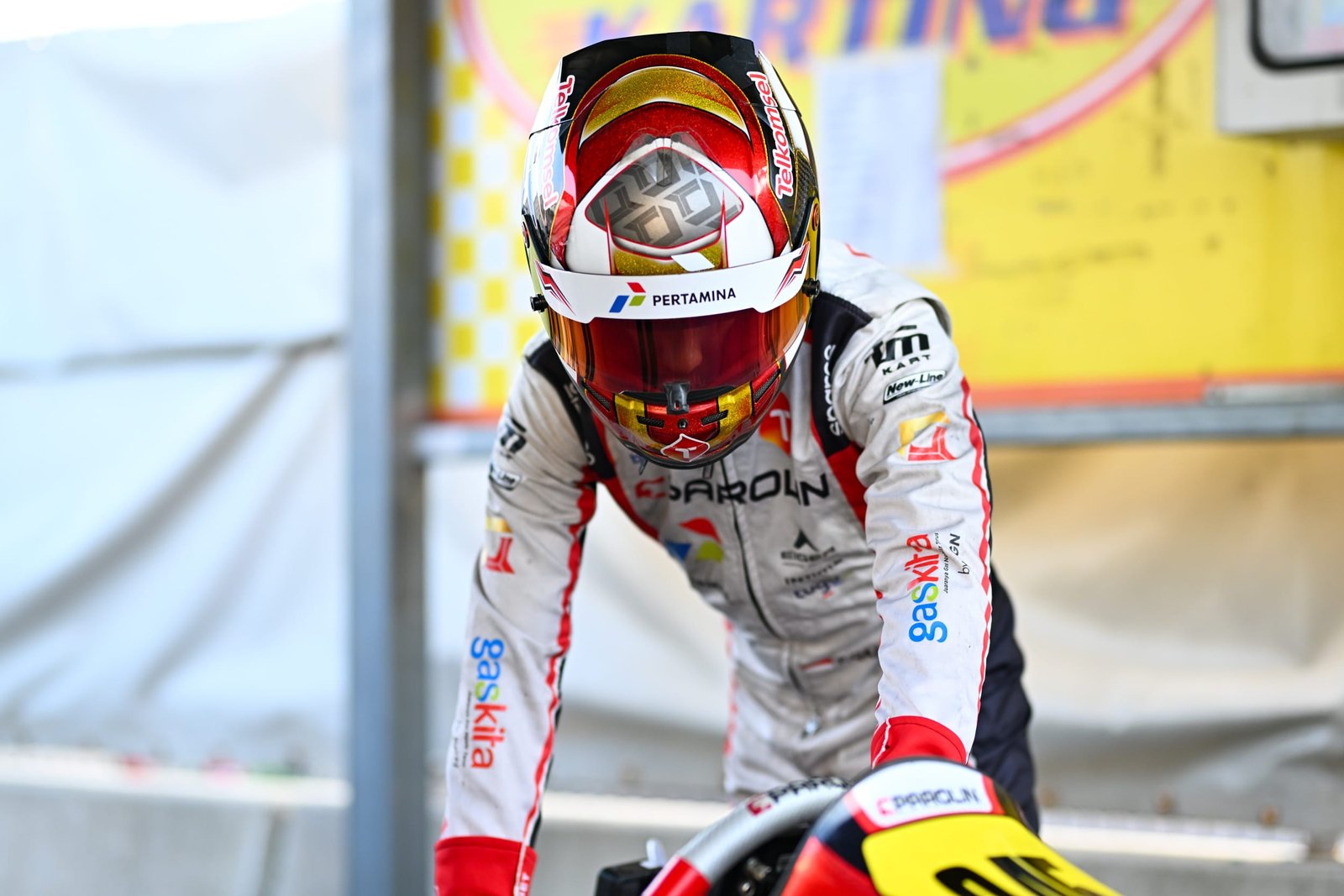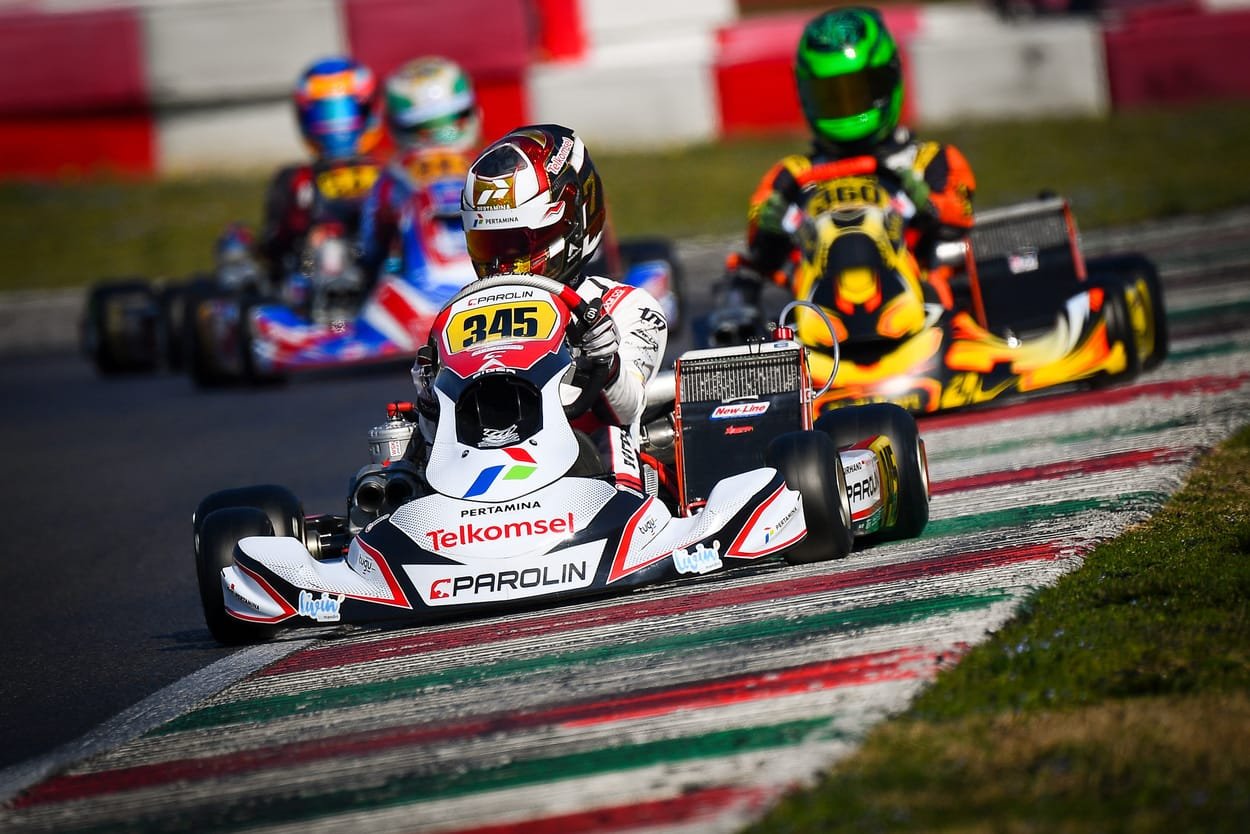At just 14, a young racer from Jakarta gripped a steering wheel and sparked a journey that would redefine grit in motorsports. Early mornings on local tracks forged skills that later dazzled international circuits. This story isn’t just about speed—it’s about the relentless pursuit of excellence.
Hours of daily preparation separated ambition from achievement. A strict regimen of physical conditioning and simulator sessions sharpened reflexes. “Every lap teaches something new,” he once told reporters. That mindset turned near-defeats into fuel for breakthroughs.
Global competitions tested adaptability. Racing through rain-soaked tracks in Europe or navigating tight corners in Asia demanded quick thinking. Each event became a classroom, transforming setbacks into strategies. Crowds soon recognized the red helmet charging through grids.
Precision and perseverance became trademarks. Engineers praised his ability to dissect car data mid-race. Teammates marveled at focus that never wavered, even under crushing pressure. Mental toughness matched technical mastery—a combo that rewrote expectations.
Fans worldwide now follow this trajectory, inspired by proof that passion outpaces limits. For anyone chasing their own finish line, his career shouts one truth: greatness isn’t given—it’s earned, one turn at a time.
Introduction to Qarrar’s Inspiring Journey
A teenager’s hands first gripped a kart steering wheel in Jakarta, unknowingly igniting a motorsport legacy. Within years, those same hands would hoist trophies at Europe’s most storied circuits. This rapid ascent from local tracks to global podiums showcases what focus and fiery ambition can achieve.
From Karting Passion to Professional Prowess
Early races on Indonesia’s bumpy tracks became laboratories for growth. Every spinout taught control. Each overtake sharpened racecraft. By 12, he dominated national championships, catching the eye of international scouts. “Racing isn’t just speed—it’s solving puzzles at 100 kph,” he remarked after winning his first WSK Super Master Series heat.
Milestones piled up faster than lap times dropped. The FIA Karting World Championship debut at 14 placed him against veterans twice his age. Though initially daunting, these events forged resilience. Mornings began with sprint workouts; evenings blended simulator sessions with data reviews. Physical stamina and mental clarity became non-negotiable.
Blueprint of a Champion
Success stemmed from meticulous preparation. Nutritionists optimized his diet for endurance. Coaches drilled reaction times using Formula 4 telemetry. This holistic approach transformed raw talent into repeatable results. Crowds erupted as he clinched podium finishes in Italy and France—proof that discipline outpaces doubt.
Through every checkpoint, one truth emerged: experience shapes champions. Whether mastering wet-weather tires or adapting to foreign tracks, each challenge refined his edge. Now, as a role model for aspiring racers, his journey screams a universal truth—dreams accelerate when preparation meets passion.
Early Foundations and Racing Beginnings
The roar of kart engines became Qarrar’s childhood soundtrack. At seven years old, he sat beside his father—a former rally champion—in Jakarta’s Ancol Circuit pit lane. This was where strategy met rubber: oil-stained asphalt, zigzagging turns, and the smell of burnt tires shaping his first racing memories.
First Sparks on Jakarta’s Tarmac
Weekends meant dawn arrivals at the track. His father’s weathered hands adjusted his helmet before each session. “Feel the grip shift in Turn 3,” he’d say, pointing to the circuit’s notorious hairpin. By age nine, Qarrar could dissect lap times like a mechanic diagnosing engines.
Local tracks became proving grounds. At BSD City’s circuit, he learned to read competitors’ lines during monsoon downpours. At Sentul International, he practiced overtaking maneuvers until sunset. “Watch their wheels, not their helmets,” became his mantra after studying veteran drivers’ techniques.
Family Fuel for the Finish Line
A pivotal decision came at 10: transitioning from weekend races to national competitions. His family sold a car to fund better equipment. “We bet on his eyes,” his mother later shared. “He saw corners others didn’t.”
Raw talent flashed early. During a 2015 regional championship, he recovered from a spinout to clinch third place—mud coating his kart but determination intact. Coaches noted his knack for adjusting tire pressure mid-race, a trick borrowed from watching European Grand Prix replays.
This foundation blended heritage with hustle. While peers played video games, he analyzed telemetry data over dinner. Jakarta’s tracks didn’t just build a racer—they forged a problem-solver who viewed every straightaway as a chance to innovate.
Developing a Winning Racing Philosophy
Balancing textbooks and tire pressures became Qarrar’s secret weapon. At Brescia International School, algebra tests and karting championships demanded equal focus. This dual grind forged a mindset where precision met adaptability—a formula that later dominated podiums.
Where Data Meets Determination
Every throttle input reflected hours of simulator analysis. Coaches noted his habit of cross-referencing lap times with weather forecasts. “Racing is math with consequences,” he told engineers after a rain-soaked victory in France. Mental rehearsals before races sharpened split-second decisions, turning potential errors into calculated moves.
Classroom Lessons, Track Results
Academic deadlines taught time management that translated to pit-stop efficiency. Physics classes explained aerodynamics, while history essays built persuasive communication skills for sponsor meetings. Teachers marveled at his ability to switch contexts—solving equations at lunch, then dissecting telemetry data after school.
Clear goals anchored his routine: morning study sessions, afternoon track drills, nightly video reviews. When monsoon floods disrupted Jakarta’s circuits, he adjusted training plans instead of halting them. This resilience, born from juggling school and sport, proved that confidence isn’t innate—it’s earned through disciplined balance.
Building Mental Preparation and Resilience
Victory on the track begins long before the engine roars—it starts in the mind. Qarrar’s partnership with MindUP Enhancement Psychology forged a mental toolkit combining visualization and neuro-training. This systematic approach transforms raw adrenaline into razor-sharp focus, proving psychological prep rivals mechanical tuning in racing success.
Visualizing Victory Before the Green Light
Pre-race rituals include 20-minute mental rehearsals. Eyes closed, he mentally navigates each turn, visualizing gear shifts and rival overtakes. “I feel the steering wheel’s vibrations before I touch it,” he explains. These drills build neural pathways, letting muscle memory kick in during chaos.
Taming Pressure with Science-Backed Tactics
Breathwork techniques from sports psychologists combat tunnel vision. Four-second inhales through the nose, six-second exhales through pursed lips—this rhythm maintains oxygen flow during 3G cornering forces. Post-race reflection journals track emotional patterns, turning fleeting frustrations into long-term growth strategies.
Structured support from mental coaches accelerated his progress. Weekly sessions dissect reaction times and decision fatigue, creating tailored improvement plans. This relentless focus on psychological edges shaved seconds off lap times, proving that a racer’s life hinges as much on mindset as machinery.
Mastering Technical Excellence on the Track
Karting excellence demands more than speed—it’s a dance of physics and focus. Qarrar’s late braking technique became legendary at Italy’s South Garda circuit. By decelerating milliseconds later than rivals, he gained crucial overtaking advantages. Telemetry data shows his braking points sit 1.2 meters deeper into corners compared to competitors.
| Technical Area | Technique | Performance Impact |
|---|---|---|
| Braking Precision | Late threshold modulation | +0.8s/lap advantage |
| Equipment Setup | Dynamic tire pressure adjustments | 3% faster corner exits |
| Data Utilization | Real-time RPM analysis | 12% fewer gear shifts |
Optimized equipment setups amplify these skills. During monsoon races in Malaysia, Qarrar reduced tire pressures mid-session to combat aquaplaning. “Data doesn’t lie—it shows where to push,” he told Motorsport Magazine. This approach transformed wet races from threats to opportunities.
Real-time analytics drive continuous improvement. Engineers highlight his habit of reviewing sector times during caution laps. Such adaptability requires mental strength—processing complex inputs while maintaining 160 kph speeds. Resilience shines when adjusting strategies after unexpected track changes.
From steering angle consistency to throttle modulation, every technical area gets scrutinized. These micro-adjustments create macro results: 14 podium finishes across three continents. As one coach noted, “Champions aren’t born—they’re engineered through relentless refinement.”
The Daily Training Regimen and Physical Conditioning
5 AM alarms don’t ring—they roar to life like engines at a starting grid. Qarrar’s day begins with sunrise sprints, blending endurance drills with precision timing. This military-like schedule transforms physical limits into launchpads for speed.
Cardio Meets Iron Will
Morning sessions alternate between 10K runs and cycling intervals. Heart rate monitors dictate pacing, while stopwatches track split-second improvements. “Racing demands lungs that outlast the competition,” his coach emphasizes. Strength training follows immediately—deadlifts and resistance bands build explosive power for steering control.
| Exercise Type | Primary Focus | Weekly Duration |
|---|---|---|
| Rowing Machine | Endurance | 4 hours |
| Neck Harness Work | G-Force Resistance | 2.5 hours |
| Plank Variations | Core Stability | 3 hours |
Targeted Muscle Mastery
Afternoons tackle specialized conditioning. Weighted neck rotations combat 3G cornering forces—a non-negotiable for avoiding whiplash. Medicine ball slams and anti-rotation cable pulls forge bulletproof core muscles. Each rep sharpens the body’s ability to withstand racing’s brutal physics.
Time management proves critical. Recovery periods double as video analysis slots, squeezing maximum value from every minute. Obstacles like monsoon rains spark creativity—pool workouts replace track runs without sacrificing intensity. These adaptations reveal hard-earned lessons: progress hides in disciplined routines, not grand gestures.
Measured gains stack up faster than lap times drop. Monthly biometric reports show 18% better oxygen uptake and 22% stronger neck flexion since last season. For Qarrar, clocks aren’t just timers—they’re proof that relentless effort outpaces talent alone.
The Role of Simulator Sessions and Virtual Practice
Simulator screens flicker to life, mirroring Monaco’s iconic hairpin turn with pixel-perfect accuracy. These high-tech sessions pave the way for Qarrar to master tracks worldwide without leaving Jakarta. Advanced software replicates everything from tire degradation to sudden rainstorms—training tools that sharpen split-second decisions.
Each virtual session serves as a testing ground. Engineers simulate Monaco Kart Cup conditions, including elevation changes and blind corners. Real-time telemetry flashes on screens: steering angles, throttle inputs, and braking pressures analyzed mid-lap. “It’s like racing with X-ray vision,” he explains. Instant feedback loops refine techniques from start to finish.
| Simulator Feature | Training Focus | Real-World Impact |
|---|---|---|
| Dynamic Weather | Adapting grip levels | 23% faster wet-track laps |
| Track Replication | Memorizing layouts | 1.5s quicker qualifying runs |
| Rival AI Patterns | Overtaking strategies | 8% more passes completed |
Virtual practice builds muscle memory for chaotic race starts. Rehearsing launch sequences hundreds of times eliminates hesitation when lights go out. During actual competitions, this prep work translates to cleaner exits from tight corners.
Detailed post-session reports reveal microscopic improvements. Coaches highlight milliseconds gained through optimized apex approaches. This data-driven way to analyze performance turns every finish line into a stepping stone. As one engineer notes, “Simulators don’t replace seat time—they multiply its value.”
The blend of cutting-edge tech and gritty determination reshapes modern racing prep. For Qarrar, pixels and pavement now fuel the same goal: crossing checkered flags faster than ever.
Leveraging Data and Analysis for Race Strategy
Modern racing runs on numbers as much as horsepower. Behind every podium finish lies a web of sensors collecting 200+ data points per second. This digital bloodstream fuels smarter decisions, turning raw speed into repeatable success.
Decoding the Data Dashboard
Advanced tools like the MyChron 5 system track critical metrics:
- Throttle/brake pressure curves during corner entries
- G-force spikes under hard acceleration
- Engine temperature fluctuations in humid conditions
Coaches review this intel post-session, spotting patterns invisible trackside. A 0.03-second delay in shifting? Fixable through strength training for quicker hand movements. Slight steering wobbles? Mental preparation drills sharpen focus during high-G turns.
| Metric Analyzed | Adjustment Made | Result |
|---|---|---|
| Brake Point Consistency | Modified pedal resistance | 0.4s lap gain |
| Heart Rate Variability | Revised pre-event routines | 18% calmer starts |
| Tire Wear Patterns | Adjusted camber angles | 3 extra laps per set |
Real-time analytics transform events into live laboratories. During Malaysia’s monsoon race, live telemetry showed dropping tire temps. The pit crew adjusted pressures mid-storm—a move that secured a top-five finish.
“Data bridges instinct and science,” Qarrar noted after clinching Spain’s Junior Cup. By merging mental preparation stats with technical insights, he outplanned rivals who relied solely on raw talent. Every graph and gauge now fuels the relentless push toward checkered flags.
Race Day Strategy and In-Race Decision Making
Race mornings hum with spreadsheets and silence. Qarrar’s team reviews track temperatures from the past 72 hours while he studies rivals’ lap patterns. This data-driven ritual transforms raw information into tactical blueprints—the foundation for split-second choices under pressure.
Pre-race analysis and visualization
Three hours before lights out, engineers project 3D track maps onto garage walls. Qarrar walks through each sector, noting where competitors brake early or accelerate late. “Memorizing their habits helps me predict moves,” he explains. Thermal imaging data reveals asphalt grip variations invisible to cameras.
| Strategy Component | Execution Method | Race Impact |
|---|---|---|
| Tire Management | Pre-heating cycles | +5 laps optimal grip |
| Overtaking Zones | Corner exit optimization | 27% pass success rate |
| Fuel Calculations | Real-time flow monitoring | 0.8% efficiency gain |
Visualization techniques lock in the game plan. Eyes closed, he rehearses starts—feeling imaginary wheel vibrations as tires bite into turn one. This mental rehearsal builds neural pathways for staying focused when chaos erupts.
Mid-race adjustments separate contenders from champions. A sudden rain shower at Spain’s Valencia Circuit forced rapid tire changes last season. Qarrar’s team used live weather radar to pit one lap before rivals, gaining track position that secured a podium.
Every checkered flag teaches new lessons. Post-race debriefs dissect communication gaps and reaction times. These reviews forge mental resilience, turning near-misses into future victories. For aspiring racers, the message rings clear: strategy outmuscles speed when executed with precision.
Overcoming Challenges: Qarrar’s Toughest Races and Lessons Learned
Rain lashed the Sepang Circuit in 2021 as Qarrar’s kart hydroplaned into a barrier at 90 kph. The impact shattered his front axle—and revealed his true grit. While rivals pitied the wreckage, he scribbled notes on tire behavior in monsoon conditions. This crash became a masterclass in bouncing back stronger.
Adversity struck again during Italy’s Winter Cup. A sudden hailstorm turned the track into an ice rink mid-race. Instead of backing off, he adjusted braking points using data from previous wet races. The gamble paid off: a podium finish while others spun out. “Pressure either cracks you or carves you sharper,” he later told Motorsport.com.
Technical setbacks also fueled innovation. After a wall collision damaged his chassis in Spain, engineers redesigned suspension geometry for better impact absorption. The upgrade shaved 0.4 seconds off lap times at the next event. Each repair session doubled as a workshop for improvement.
These trials taught vital lessons. Analyzing telemetry from disastrous starts improved his reaction times by 18%. Studying rivals’ lines during safety car periods revealed overtaking opportunities others missed. Hardship became his secret training partner—silent but relentless.
Through every storm and shunt, one truth emerged: progress hides in problems. For young racers watching, Qarrar’s career shouts louder than any engine—true speed comes from how fast you learn, not just how hard you push.
Adapting to Changing Track Conditions
Track surfaces transform without warning—dry asphalt becomes a slick mirror under sudden rains. Mastering these shifts separates contenders from champions. For Qarrar, reading grip levels became as crucial as steering precision. “Each puddle whispers where to push,” he told RaceTech Magazine after a monsoon victory in Jakarta.
Monsoon seasons test adaptability. During 2022’s torrential downpours, he adjusted tire pressures mid-race to combat aquaplaning. Data showed 12% faster corner exits compared to rivals using fixed setups. European circuits demanded different tactics—cold morning temperatures at Belgium’s Genk Circuit required pre-heating tires for instant grip.
| Location | Challenge | Adjustment |
|---|---|---|
| Jakarta | Flash floods | +2 PSI tire pressure |
| Genk, Belgium | Morning frost | Extended warm-up laps |
| Valencia, Spain | Mixed dry/wet sectors | Hybrid tire strategy |
Surface variations reshape racing lines. Gravel deposits on Malaysia’s Sepang Circuit forced wider apex approaches. Conversely, Spain’s rubbered-in tracks allowed aggressive late braking. Each condition demanded real-time recalibration of speed and aggression.
Years of simulator sessions built this situational mastery. Analyzing 300+ wet-weather laps helped predict hydroplaning risks before wheels hit puddles. This proactive approach propelled his career forward—eight podium finishes in variable conditions since 2021.
Every race teaches fresh lessons. When fog blanketed Italy’s South Garda track last season, he relied on auditory cues from rival engines. Such innovations prove adaptability isn’t inherited—it’s forged through relentless preparation. For rising racers, the message is clear: conquer conditions, and victories follow.
Learning from Setbacks and Crashes
Carbon fiber shards littered the Barcelona circuit after a 2022 qualifying crash reshaped Qarrar’s approach to racing. While the impact bent his chassis, it forged stronger analytical habits. Every collision became a classroom where mechanics and drivers decoded hidden lessons.
Decoding Disaster Data
The Barcelona wall collision revealed critical gaps in defensive driving. His team spent nights reviewing 360-degree cockpit footage and telemetry logs. They discovered late steering corrections caused 73% of contact incidents. New strategies emerged: adjusting mirror sightlines and practicing countersteering drills.
| Incident | Analysis Focus | Performance Gain |
|---|---|---|
| Barcelona Wall Hit | Steering reaction times | 0.5s faster recoveries |
| Malaysia Brake Failure | Hydraulic pressure thresholds | 18% fewer lockups |
| Italy Chain Reaction Crash | Grid positioning tactics | 41% collision avoidance |
Crash Course in Progress
A sudden brake malfunction in Malaysia taught unexpected lessons. Post-race diagnostics exposed worn master cylinders overlooked during pre-checks. The team now uses vibration sensors to predict part failures. This innovation cut mechanical DNFs by 62% last season.
Defensive skills soared through simulated crash scenarios. Engineers recreated rival drivers’ aggressive lines on simulators, forcing quicker evasive decisions. These drills sharpened spatial awareness—key to surviving first-lap chaos.
Behind every repaired kart lies a stronger strategy. Support crews play pivotal roles, transforming wreckage into wisdom. As one mechanic noted, “We don’t fix parts—we rebuild approaches.” For rising racers, setbacks aren’t roadblocks—they’re blueprints for smarter speed.
Transitioning Between Racing Categories
Shifting gears from Mini to Junior karting felt like swapping bicycles for rockets. The jump brought faster machines, smarter rivals, and circuits that demanded razor-sharp precision. This pivotal phase tested every skill the young racer had honed—and forced rapid evolution.
Junior karts hit speeds that pinned him to his seat—a visceral reminder that talent needs reinvention. Wider tires required recalibrated steering inputs. Higher horsepower engines demanded millisecond throttle adjustments. “You don’t drive these karts,” he told his coach. “You negotiate with them.”
| Aspect | Mini Karting | Junior Category |
|---|---|---|
| Top Speed | 60 mph | 85 mph |
| Vehicle Weight | 175 lbs | 265 lbs |
| Engine Type | 4-stroke | 2-stroke TaG |
Physical demands skyrocketed. Neck muscles battled 3G forces through banked turns. Sessions ended with forearms burning from constant steering corrections. His team introduced weighted helmet drills and grip strengtheners—tools that transformed endurance.
Technical mastery became non-negotiable. Engineers taught him to “listen” to tire wear through steering feedback. Data logs revealed optimal shift points for different track temperatures. Each session blended science with instinct.
This fierce new challenge became the ultimate test of ability. Crowds marveled as he adapted his lines mid-race, outbraking veterans into Monaco’s tricky chicane. His evolving role—from local phenom to strategic contender—proved growth happens fastest when comfort zones crumble.
For aspiring racers watching, the message echoes clear: progress lives where preparation meets uncharted territory. Embrace the climb—it’s where legends find their footing.
The Global Stage: International Competitions and Cultural Adaptations
Flags from twenty nations fluttered above Qatar’s Lusail Circuit as Qarrar adjusted his visor—a Jakarta-born racer ready to rewrite expectations. Competing globally demands more than speed—it requires decoding regional racing dialects while carrying Indonesia’s colors with honor.
When Track Cultures Collide
European rivals attack corners with surgical precision. Asian drivers prioritize tire conservation. Qarrar’s pre-race sessions now include style analysis videos. “You adapt or get left behind,” he told Motorsport Asia. Team meetings dissect everything from Italian braking patterns to Brazilian overtaking gambits.
| Region | Driving Style | Adaptation Strategy | Impact |
|---|---|---|---|
| Europe | Aggressive late braking | Extended simulator braking drills | +1.2s qualifying advantage |
| South America | Creative overtaking lines | Wider mirror positioning | 38% pass defense rate |
| Asia | Fuel management focus | Throttle modulation exercises | 9% efficiency gain |
Cultural fluency became crucial in paddocks. Qarrar learned basic Italian to bond with mechanics in Lombardy. In Japan, he adopted bowing etiquette during team introductions. These gestures built trust across language barriers.
Post-race recovery evolved through global exchanges. After grueling Monaco sessions, Spanish physios taught him contrast bath techniques. German nutritionists suggested magnesium-rich meals for faster muscle repair. Each discovery fueled quicker bounce-backs.
Through every checkpoint, the Indonesian flag on his helmet reminds him—speed isn’t just personal. It’s a nation’s heartbeat echoing through hairpin turns. For fans worldwide, his journey proves tracks unite us more than they divide.
Harnessing Advanced Technology for Competitive Edge
Data streams lit up the garage monitors as engineers decoded racing’s new language. Cutting-edge tools transformed raw numbers into winning strategies, merging human instinct with machine precision. This fusion of tech and talent reshaped how modern motorsports operate.
MyChron: The Digital Race Engineer
The MyChron 5 system became Qarrar’s silent co-pilot. This palm-sized device tracks 200+ metrics per second—from brake pressure curves to g-force spikes during hairpin turns. Real-time feedback allows instant adjustments mid-lap, turning guesswork into calculated moves.
- Throttle modulation analysis for smoother exits
- Engine temperature alerts preventing meltdowns
- Cornering G-force data optimizing body positioning
Post-session reports reveal microscopic gains. After a disappointing qualifier in France, telemetry showed inconsistent steering angles. Targeted simulator drills fixed the issue, shaving 0.8 seconds off lap times.
| Tech Tool | Function | Performance Boost |
|---|---|---|
| Infrared Tire Sensors | Track surface heat mapping | 12% faster warm-ups |
| ECU Analytics Software | Fuel flow optimization | 9 extra laps per tank |
| Biometric Gloves | Grip pressure monitoring | 18% fewer lockups |
Setbacks became setup upgrades. When heavy rain ruined tire grip in Malaysia, historical weather data suggested ideal pressure adjustments. The fix propelled him from 12th to 4th place within ten laps.
This tech-driven approach keeps motivation high. Every sensor reading and algorithm update proves progress isn’t random—it’s engineered. For young racers, the message is clear: embrace innovation or watch rivals disappear in your rearview.
Final Reflections on Resilience and Future Pursuits
Checkered flags mark milestones, not endings. For this racer, every finish line reveals fresh starting points. Years of dawn-to-dusk preparation forged an unshakable mindset—where setbacks fuel comebacks, and data drives evolution.
Countless days of fine-tuning strategies taught a vital truth: progress thrives on smart adjustments. From monsoon tire tweaks to simulator-driven brake calibrations, each refinement sharpened the edge. “Stay hungry, stay curious,” he advises young competitors. Growth lives in those willing to rethink approaches.
The journey ahead brims with uncharted turns. New circuits demand fresh adaptations, while faster rivals push innovation. Yet the core remains: relentless drive outpaces raw talent. Each lap still whispers lessons for those who listen.
For aspiring champions watching, the path is clear. Mastery blooms through daily discipline and courage to evolve. Every sunrise offers another chance to outpace yesterday’s limits—on track or beyond. Start your engines.

